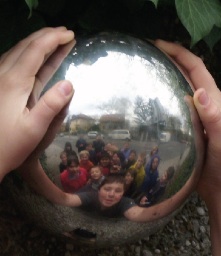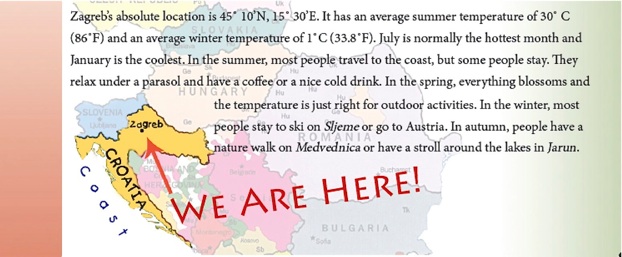ZAGREB THROUGH THE EYES OF 5TH AND 6TH GRADERS
by Erika Šaravanja, Grade 5 Teacher
Good ideas are infectious. How could we resist inviting our fifth and sixth grade students at the American International School of Zagreb (AISZ), where I teach, to add their “village” to the In Our Global Village program”
There were many good reasons to embark on this project. Andrea Katić, the students’ Croatian culture teacher, and I recognized it as a great way for students to become more knowledgeable about the city where they live or will live for the next two, three or more years. For some of our students, Zagreb is a permanent home; for others it is temporary. As an international school, we are used to children coming and going; our current student body of 210 includes 37 nationalities.
Transient or not, what a shame to live in a place and not explore what it has to offer in the way of history and culture! This became our charge.
Through field trips, interviews, class work and research projects, we came to know more about Zagreb than we had every imagined.
First we decided on a scheme for the book: looking at Zagreb through the colors blue, red, green, and gold. The official city color is blue; red represented tradition; green represented nature; and gold was for unique installations.









